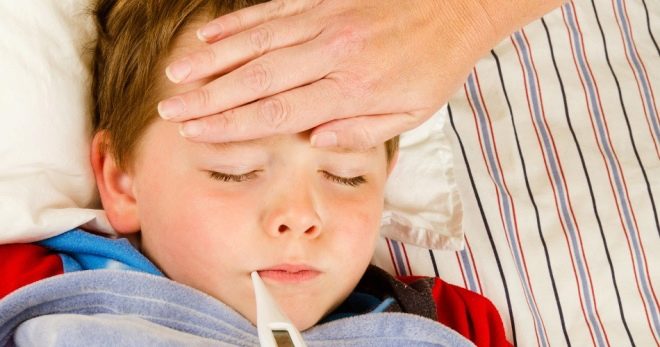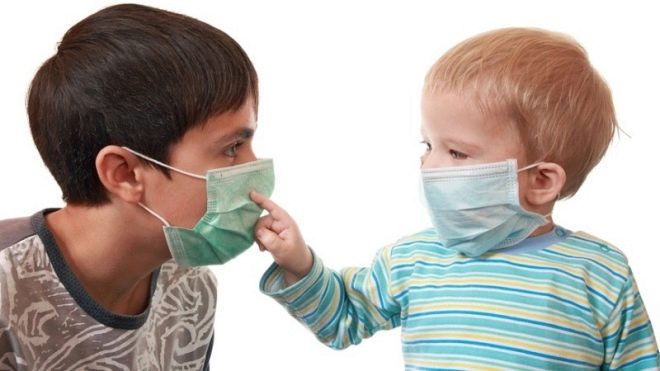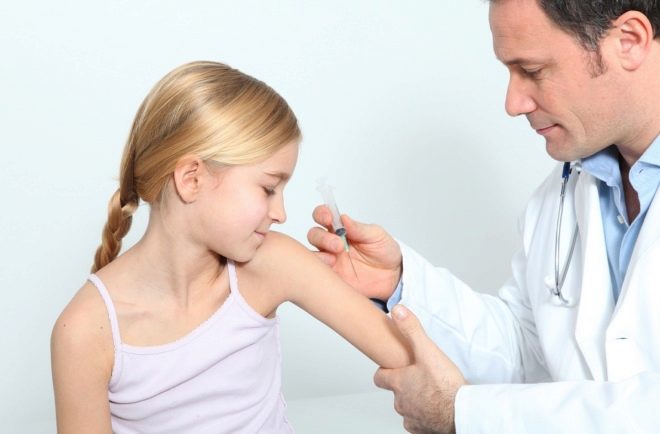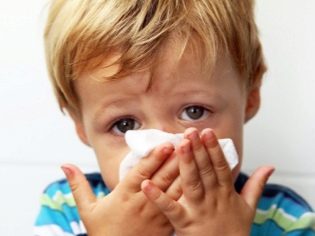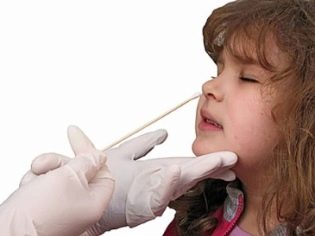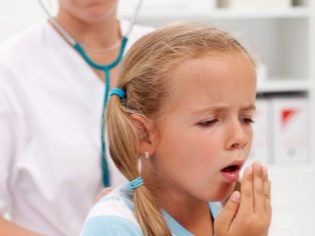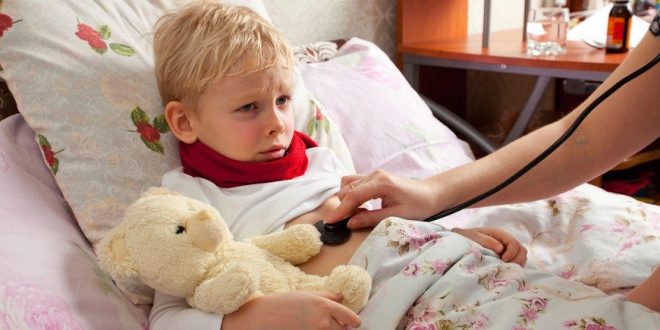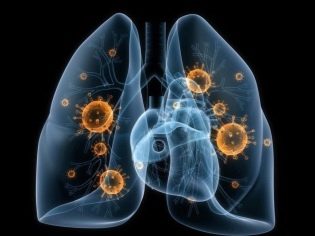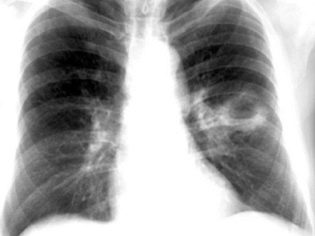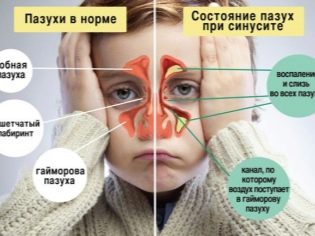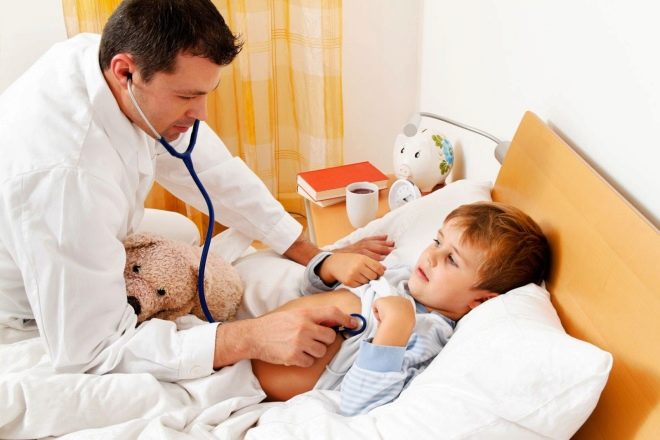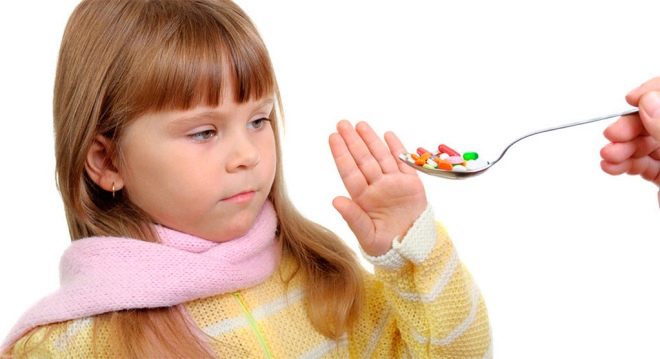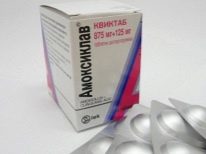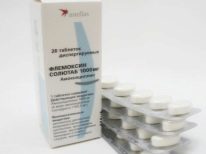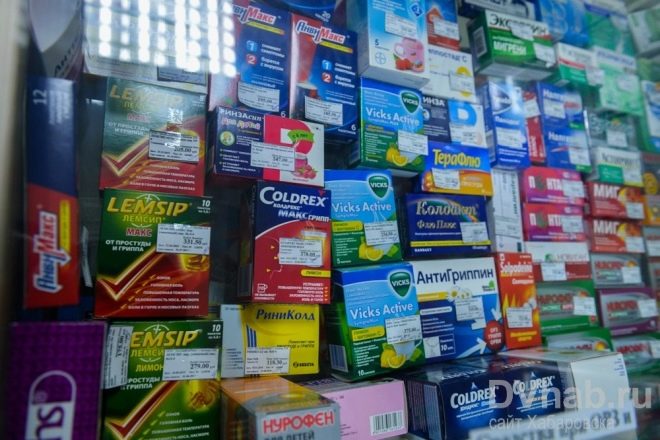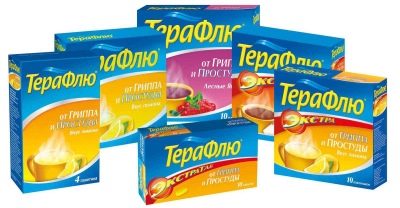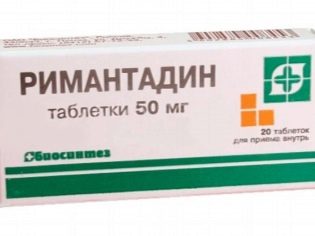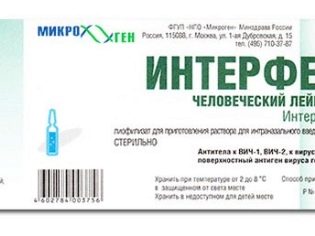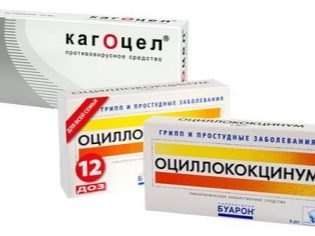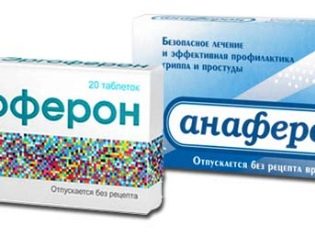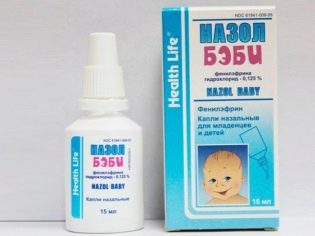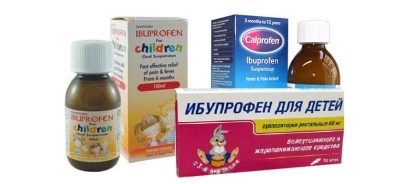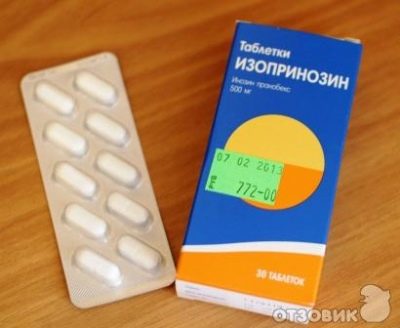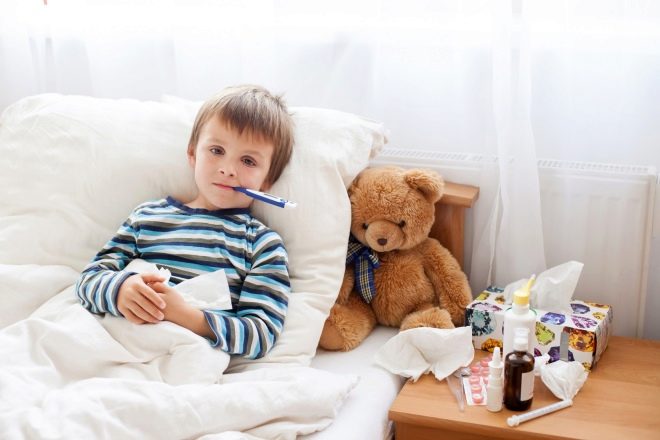Symptoms and treatment of flu in children
All moms and dads know that the flu is very dangerous for the life and health of a child. However, not everyone knows how to distinguish the flu from the masses of viral diseases like it, and out of habit, flu is often called any seasonal infectious disease associated with fever, cough and rhinitis. In this article we will look at what the flu is, how to recognize it in a child and how to treat it.
What it is?
The disease received a beautiful French name - "Grippe". At its core, the flu belongs to acute infectious diseases, and it is caused by a very specific virus - one of the representatives of a large group of influenza viruses. One of 2000 viruses that are currently known to science can cause flu.
Every year, up to half a million people die from various variants of influenza viruses in the world, most of them are children and elderly people, because their immunity is much weaker than that of an adult person of young or middle age.
Often you can find the second name of the disease - "influenza". It comes from the Italian word for "impact." This name was fixed due to extreme contagion. Very quickly, individual outbreaks of virus infection turn into an epidemic covering large areas, and then into a pandemic, into which entire countries and continents are drawn.
The virus is transmitted by airborne droplets, and medicine can not keep up with its mutations. Every year, new strains that are resistant to certain drugs, characterized by symptoms. Influenza is not so much dangerous in itself, as its complications. Often, after suffering the flu, pneumonia begins, there is a loss of hearing, of vision, and the heart muscle is affected.
Doctors drew attention to a strange disease in the 16th century, but for the first time the flu virus was detected, isolated and studied in 1930, since then research has not stopped. Several species, subspecies, types and subtypes of influenza have been identified, many of which are dangerous to humans.
How to distinguish from ARVI?
Influenza is in the group of acute respiratory diseases (ARVI), but is only one of its representatives. In this group there are about 200 types of respiratory diseases that cause adenoviruses, rhinoviruses and other viruses. They provoke diseases that are considered to be flu-like, that is, similar to the flu. But in fact they are very different ailments.
It is a mistake to call any viral infection with the flu, but here the flu can be considered as SARS, although rather arbitrarily. Due to the fact that the group is large, requires specification.
Let's say right away that at home it is almost impossible to distinguish flu from ARVI. To do this is real only with the use of laboratory research. A blood test will help determine whether it is SARS or flu with high accuracy, and a laboratory analysis will show which particular flu strain struck the patient.
The external differences between the flu and other viral acute respiratory illnesses are somewhat erased, implicit. So, at SARS temperature is slightly lower than with the flu, and muscle aches and severe headache are most often found during the illness of the flu.
Often the question of differences does not perplex themselves and doctors. If the child is sick, and the mother called the doctor at home, the doctor will make a diagnosis of ARVI with a 99.9% chance. Formally, he will be right, because the flu, as we now know, is a full member of a large group of ARVI. Why do not pediatricians get to the bottom of the truth? The answer is quite simple - the Ministry of Health of the region will not praise the zealous specialist, who “spoils” the epidapartine in a region or region, which creates extra work for laboratories, and also “dramatizes” from scratch.
That is why the entry “ORVI” appears in the child’s card, and the assignment is distinguished by a banal and standard approach. Blood for analysis in a child will be taken only if he gets to the hospital. There it will be important to establish the exact strain and type of virus, at least in order to avoid an epidemic. Unfortunately, parents often find out about the exact diagnosis after the child who has passed away makes a post-mortem examination.
If the mother has doubts about the diagnosis of "ARVI", if the child feels very bad, his condition is serious, no need to be shy. Parents have the right to insist on a full and exhaustive examination, to require laboratory blood tests for influenza virus excretions. This will help save the child's life.
Types of flu
Three types of influenza virus are dangerous for humans: A, B, C.
The safest of them is view C: diseases caused by viruses of this type do not cause epidemics and pandemics, everything is limited to only single outbreaks of the disease, which, in turn, proceeds fairly easily - without cough, but with a cold, with no fever. Terrible complications of the virus type C does not cause.
The most common is influenza caused by viruses of type A. It includes well-known H1N1, H1N2, H3N2 strains. These are the most insidious viruses that change faster than scientists manage to describe and study its new forms. It is the flu A that causes the largest and most severe epidemics. The likelihood of severe complications from such a viral ailment is highest.
Less common is influenza caused by viruses of species B. These viruses do not have strains, are not divided into subtypes, mutate less often and almost do not cause epidemics. However, each case of infection with the virus is not easy. The good news is that the likelihood of complications after it is small.
The history of epidemics clearly shows that influenza A is the most dangerous.. In the early 20th century, the Spanish flu (H1N1) claimed millions of lives. At the end of the 50s of the last century, humanity faced a severe pandemic of the Asian flu (H2N2). In the late 60s of the last century, many people died from the Hong Kong flu (H3N2). At the beginning of the new millennium, people “met” with avian flu (H5N1), and more recently, swine flu (A-H1N1) was isolated.
Types of flu in 2018
Every year, WHO scientists observe the incidence and closely monitor the structure of influenza viruses. This allows them to predict the incidence of the year ahead and create new vaccines. For 2018, the projected new strain of influenza. Virologists claim that he will take all the "best" from the three strains - "Brisbane", "Michigan" and "Hong Kong."
Epidemics, according to WHO representatives, most likely, can not be avoided. Spring 2018 is just the beginning, most of the diseases are predicted in the autumn. Each of the components of the new strain has been mutated, so there is nothing for doctors to adequately confront with a new ailment, but work is being done in this direction every day.
In addition, this year, doctors plan to "meet" with the already familiar avian and swine flu, as well as with other species of species A.
Why inoculate?
It is the ability of the virus to mutate at unprecedented speed that necessitates annual vaccination. The strain that “walked” last year is likely to change by next year, so a completely different vaccine and possibly another treatment regimen will be needed.
Previously, the vaccine protected a person from two viruses of type A and viruses B, now the composition of the vaccine has been expanded to 4 strains and this is not the limit: scientists annually evaluate mutations and make adjustments to the “recipe” of another flu vaccine.
Vaccinated is recommended for all children over 6 months. After vaccination, immunity does not begin to work immediately, but about 2 weeks after the introduction of the vaccine components. That is why it is important to make sure that the child is vaccinated in advance. If the epidemic has already covered a good half of the city, vaccinate late and pointless.
How does the infection occur?
Anyone can get sick with the flu, regardless of age, gender, or health. All are susceptible to the virus. But the likelihood of severe complications is higher for those with weaker immune defenses. Pregnant women and children, as well as pensioners are a special risk group.
The source of infection is the person. A sick person may have severe or hidden symptoms, but in both cases it is equally dangerous for others from the moment of infection and ending with full recovery.
On average, the flu lasts 7-10 days. Throughout this time, the virus will spread through the air, with particles of saliva and nasal mucus when sneezing and coughing.
According to experts, the spring flu is less dangerous in terms of the development of a severe form and an epidemic. But in the autumn-winter period, the viral ailment is a real threat to children's health. Scientists have found that the fastest virus of the flu spreads in the environment at temperatures from +5 degrees to -5 degrees Celsius, with low humidity. The drier the air, the faster and more aggressively the flu virus will act, collecting more and more victims.
At the moment of infection, the virus enters the children's body through the nose, less often through the eyes. The cells of the upper respiratory tract epithelium are first affected. The virus is introduced into them, begins to multiply, rebuilds the structure of the cells of the nasopharynx, trachea, bronchi. The cells cannot resist the coarse invasion for a long time and die, then the virus infects the neighboring cells and so on, until the ciliated epithelium is partially detached.
When the ciliated epithelium is almost stifled, the flu virus enters the bloodstream. Together with it, it spreads throughout the body, causing intoxication, muscle and headaches, spasms, chills, and "aches." Blood vessels are also affected by a foreign invader and become more permeable, which often leads to hemorrhage, stasis.
In patients with influenza, there are often signs of severe exudative damage to the alveoli and other structural units of the respiratory system. Simultaneously with an attack on all fronts, the influenza virus has an overwhelming effect on the immune system - the only system of the human body that can give it an adequate response to aggression. If the immunity is already weak, protection is significantly reduced, secondary infections join in - bacterial, fungal, viral. The development of complications begins.
From the moment of infection until the first signs of the disease appear, it may take several hours, or maybe several days.
Most often in children due to age-related weakness of the immune system, the incubation period lasts 1-2 days.
The younger the child, the weaker his natural immune defense, the shorter the incubation period will be. Thus, in a teenager, the flu can manifest itself only on the third day after infection, whereas in a child of 1-2 years the disease develops faster, is more severe and more often ends with complications.
The most severe flu occurs in children with chronic respiratory diseases, as well as in children from six months to 3 years. Newborns, by the way, are sick with influenza quite rarely. Doctors are inclined to see this as a positive protective effect on the body of an infant’s maternal innate immunity, because the mother transmits some antibodies to the child during the prenatal period, and the majority of antibodies to common infections are obtained with the mother’s breast milk.
Symptoms and signs
Influenza - an insidious disease, it has no specific symptoms. Recognizing this disease among other viral diseases is not so easy as it may seem at first glance. Reliably determine the flu can only laboratory diagnostics.
The virus can be isolated from smears from the throat of a sick child, from the nasopharynx, as well as from the results of a serological test, which allows to determine the presence of anti-influenza antibodies in the blood.
The diagnosis of "flu" can only be made on the basis of a comprehensive laboratory study. Serological indicators, ESR in the study of the general analysis of blood (OAK), the number of leukocytes - all this matters, and the assessment "by eye" - no.
However, parents should know how the disease manifests itself. Symptoms may be more pronounced and less noticeable. The form of the disease can be from mild to hypertoxic.
The classic picture of the flu looks like this: first, the body temperature rises. This rise is sharp, sudden and sharp. The temperature does not increase gradually, it immediately "jumps" to 38-40 degrees. Symptoms of intoxication appear almost immediately: severe pain in the muscles, crushing pain in the eyeballs, breaking pain in the legs, severe chills, headache.
Intoxication can manifest vomiting, most often vomiting at high temperatures occurs in children 2-4 years old, as well as children after 5 years.
Fluid current snot, common to most viral respiratory infections, is usually not seen with the flu. On the contrary, the nose remains mostly dry. The child feels hot and dry in the mouth and nose. The first signs include dry and frequent cough.
An older child will be able to describe an additional sensation when coughing - pain in the chest region. Due to the fact that the influenza virus violates the integrity of the blood vessels, in children, especially in small ones, blood can go from the nose, a hemorrhagic rash appears, resembling small hemorrhages.
If the flu is mild, then such symptoms persist for 4-5 days, after which they begin to recede, the child remains for several days after this feeling of fatigue, weakness, weakness, and increased fatigue.
In severe flu, the improvement in 3-4 days is insignificant and short in itself. After a barely noticeable relief, the child becomes worse, he develops secondary complications: pneumonia, vascular collapse, swelling of the brain, hemorrhagic syndrome.
How often complications develop, unambiguously quite difficult to answer. In clinical practice, severe complications do not develop as often, but in all cases, without exception, they represent a serious danger to the health and life of the child. Medium-heavy, severe and toxic forms of the flu usually lead to them. The greatest number of deaths was registered among children under the age of 2 years.
The most common complications are:
bacterial pneumonia (one of the most severe forms);
hemorrhagic pneumonia;
lung abscess;
respiratory acute distress syndrome;
bacterial rhinitis;
sinusitis;
tracheitis;
encephalitis;
meningitis;
radiculoneuritis and other neuritis, including acoustic neuritis;
myocarditis;
toxic and allergic shock.
Is it possible to affect the likelihood of complications - the second difficult question.Many doctors tend to believe that it is impossible to influence this in any way, it is impossible to predict the behavior of immunity. However, most doctors believe that treatment, which begins in a timely manner, without delay, partially reduces the likelihood of the development of dangerous and serious complications.
Treatment
Flu treatment is a complex of measures, which in fact is always more complicated than manufacturers of dubious “cold and flu” drugs, which are widely advertised on Russian television, in newspapers and on the radio. 99% of drugs that are advertised as effective drugs for the flu have nothing to do with the treatment of the flu and have no effect.
First of all, when detecting the first signs of illness resembling the flu, the child should be put to bed, and his physical activity should be limited. Since low air humidity is very important for virus propagation, it is necessary to actively humidify the air.
With increased humidity, the causative agent of the disease will have less chance of hitting large areas of the ciliated epithelium, the disease will spread more slowly, the chances of complications will decrease tenfold.
Moisten the air in many ways. If the house has a humidifier, you need to turn it on and set the desired humidity scale to 50-70%. If there is no such wonderful device in the family, you need to hang wet towels on radiators on a rope stretched for such an occasion across the room and carefully ensure that they do not dry out completely, from time to time wetting them again.
In a room where it is hot, humidity is harder to lift. Therefore, it is worthwhile to ensure that in the room where the sick child is located, the air temperature does not exceed 21 degrees Celsius. It may seem too harsh to parents, because according to the subjective sensations, 21 degrees is pretty cool. If such a temperature causes inconvenience to households, let them dress warmly. For the patient, it is this temperature that will be the most optimal, contributing to the speedy recovery.
The second necessary condition for proper treatment is an adequate amount of fluid. The child should be constantly watered with warm water, warm tea, or homemade fruit drink, but not milk. Drinking plenty of water will provide an opportunity to further moisturize the mucous membranes, and also prevent the onset of dehydration, which threatens the child with high heat and toxic form of flu that occurs with diarrhea or vomiting.
If the child categorically refuses to drink, it is necessary to be more insistent, if the sick person is very small, you can use a disposable syringe without a needle in order to drip warm liquid into his mouth in small portions.
Salt solution, saline, special preparations based on sea water will help to keep mucous membranes from drying out and the destructive effect of the influenza virus. Irrigate the mucous membranes of the nose should be as often as possible, there will be no harm from this. By and large, this is all that parents can do in the first stage. Of course, after a pediatrician is called to the house.
With the flu or a child suspected of it, you do not need to be taken to the clinic for an appointment with a doctor. The disease is very contagious. Stay at home and wait for the doctor. The health worker will be able to prescribe drugs that he considers most effective and appropriate in this situation.
Medicines
In Russia, they love to self-medicate. Parents for some reason believe that the flu can be given to a child "Kagocel"Or any antibiotic and calm down. In fact, the use of medications for influenza infections is a rather dubious question.
Experts tend to believe that mild flu forms do not need medication. Why is that? Because light forms of influenza rarely cause complications.In itself, the flu in the form of light - a kind of training for the immunity of the child. He must cope with the virus himself, without outside support. And the children's body is capable of it, if the parents do not interfere with it.
In the mild form of influenza, ample warm drink is sufficient, humid air, irrigation of the mucous membranes of the nose and throat. Additionally, you can give your child large doses of vitamin C.
Insist on eating is not worth it. An empty stomach is easier for the body to mobilize its defenses. When there is no need to spend energy on digesting food, recovery is faster. That is why nature arranged so that the sick child refuses to eat.
It would be useful to remind you that no medicine should be given to a child without the knowledge of a doctor, even if mom and dad are sure that last time this particular syrup helped. There is a special group of medicines for the flu - anti-influenza drugs. There are few of them, they are all used exclusively by doctor's prescription. Let's look at what means the child’s flu can be cured, and what cannot.
Antibiotics
Antibiotics are effective against germs and bacteria.
They are really used for flu, but only if if bacterial complications began, for example, bacterial pneumonia or rhinitis caused by pathogenic bacteria. If there is no such complication, the use of antibiotics is inappropriate. They can not affect the virus, to alleviate the course of influenza infection.
However, taking antibiotics for influenza significantly increases the likelihood of complications themselves.
Bacteria adapt to the drug that the patient receives "just in case", and then it will be very difficult to cure such an infection.
Parents may object, because local pediatricians called home often prescribe an antibiotic before the development of complications with the wording “for prevention”. The pediatrician seeks to protect himself, because with complications, complaints will arise to him, and if complications arise while taking antibiotics, no one dares to reproach a specialist for not prescribing treatment in time.
Antibiotics are not used to prevent complications., they are created solely in order to treat bacterial diseases, fight bacteria when they show pathological activity. Therefore, an experienced and thinking parent will categorically refuse such an appointment, asking to assign the correct treatment, and not “just in case” therapy.
If complications have already begun, then antibiotics are necessary. For children, the most commonly used drugs are broad-spectrum drugs, for example, Flemoxin,Amoxiclav" or "Amoxicillin". They are appointed by the course taking, the duration of the course is determined by the doctor, in no case can you interrupt the course.
Antiviral drugs
Unlike other acute respiratory viral infections, the influenza virus is sensitive to antiviral drugs, but only to certain drugs. They are used for both treatment and prophylaxis. An important condition - it is necessary to treat the flu as early as possible. The effectiveness of the remedies will be shown only when the treatment began even before the onset of clinical symptoms. In the later stages, the effectiveness of antiviral treatment is significantly reduced. It is unlikely that one of the parents would think of treating a child for a disease that has not yet manifested itself. From this it follows that special hope for antiviral agents can not be pinned.
Against influenza virus in the laboratory, two groups of antiviral drugs show a definite effect.:
- neuraminidase inhibitors;
- adamantane derivatives.
Stand alone are drugs that are derivatives of interferon, which have not only antiviral, but also anti-inflammatory action.
Neuraminidase Inhibitors reduce the activity of the virus, acting on it in a direct pattern. These drugs include "Tamiflu".It is very effective against most strains of influenza, including bird flu, but medicine today has indisputable evidence of multiple side effects from taking such drugs.
For example, in Japan, where Tamiflu is the main drug for children’s flu, suicides among teenagers are very often recorded. Experts tend to believe that mental disorders that lead to suicide and other unpleasant behavioral pathologies are a consequence of the effects of neuraminidase inhibitors.
Side effects of this group of drugs also include diarrhea, intestinal disorders, abdominal pain, vomiting, and convulsions. According to the indications, Tamiflu is given to children in a hospital setting; in ordinary pharmacies, this medication cannot be purchased without a doctor's prescription. "Theraflu" and other "flu", which are so often advertised on television, are not related to anti-influenza drugs, despite the fact that manufacturers say the opposite. They only partially relieve the symptoms of the disease, but in no way affect the virus itself.
M2 Inhibitors (Adamant Derivatives) - "Amantadin" and "Rimantadine". These drugs do not allow the virus to enter the cells. They have fewer side effects, but the main effect is not too pronounced. In addition, physicians are increasingly talking about the emergence of strains of influenza resistant to these funds.
Interferons against influenza, drugs that are donor serum and anti-influenza gamma globulin are quite effective. These funds are administered intramuscularly, with severe toxic forms of the disease at 0.15-0.2 ml per kilogram of baby weight.
Experts warn that large doses of interferon can adversely affect the health of the child. Often, children are prescribed to bury Interferon in their nose. In this preparation, the dosage of interferon is small, they will not cause harm, but experts doubt the effectiveness of such treatment and prevention.
Thus, if the doctor sees the appropriateness of using antiviral drugs, he should prescribe a treatment that will take place in a hospital under the supervision of doctors.
An independent choice of the means, in the title of which there is the word “antiviral”, does not make sense and, at best, simply does not harm, but will not have any effect on the course of the illness.
Dr. Komarovsky talks about antiviral drugs in the next video.
Homeopathic remedies
Many parents choose drugs that do not have a medical relationship for the treatment of their children, they are homeopathic. And no one warns parents of this. Most of the widely publicized drugs for flu and colds are homeopathy, meaning that the doses of the active substance in them are so small that they are calculated in molecules rather than milligrams. The child essentially does not receive a pill for flu, but sugar, starch, and water.
The homeopathic preparations include the well-known “Anaferon” and “Anaferon for children”, “Oscillococcinum"," Ergoferon "," Viferon ". It is these tools in modern pediatrics that are favorite and most prescribed. Doctors know for sure that this is homeopathy, but they are tactfully silent about it. This happens because the flu will pass on its own, in 3-5 days. However, parents will be calmer if a doctor with an authoritative person prescribes at least something for them.
Homeopathic remedies can not harm the baby, the doctors are well aware of this. But it was not yet possible to prove the benefit of them experimentally.
It is up to moms and dads to spend household budget funds on such drugs. The truth is that such “medicines” are very useful for those who produce them; every cold season they bring billions of dollars in profits to their creators.
For more information on homeopathic remedies, see Dr. Komarovsky’s program.
Vitamins
Vitamins for a child with the flu are useful and necessary. They have a restorative effect, but in no way treat the flu itself. And because there is no point in making an unhappy child choke on a sour lemon, if he has all the signs of the flu. How vitamin A influences viral illnesses, doctors argue for a long time. However, the point in this dispute was put by scientists who were able to prove that No dose of ascorbic acid can cure a person from the flu, but this substance can somewhat ease the course of the disease.
Therefore, there is nothing wrong with the fact that a mother cooks blackcurrant fruit drink to her sick baby, gives tea with lemon if he is not allergic to citrus fruits, or buys delicious and pleasant vitamin tablets from the pharmacy. Of course, this will not affect the likelihood of complications, but it certainly does not hurt.
How to treat?
Proper treatment of influenza is considered to be symptomatic treatment, which does not imply the need for the use of either antibiotics or antiviral drugs.
Systemic drugs, as can be understood from all of the above, are relevant only in severe and toxic forms of the disease. In all other cases, parents should follow general guidelines - humidify the air, flush their nose, monitor bed rest, and feed their child generously.
Symptomatic treatment includes the means that will help the child survive several days of influenza infection with the least loss. If the baby has developed a runny nose, it is allowed to bury him vasoconstrictor drops, for example, "Nazivin" or "Nazol" in its children's forms.
It should be remembered that such drugs should not be used for more than 5 days, they develop persistent drug addiction.
Paracetamol-based antipyretic drugs will help reduce fever. If they are ineffective, the temperature does not fall, you can give the child a non-steroidal anti-inflammatory "Ibuprofen" or other drugs based on it, ibuprofen also perfectly removes the high temperature.
It should be remembered that high fever with influenza is a protective mechanism of children's immunity.
It is during the heat in the body that the production of natural interferons is stimulated, which enter into a merciless war with a penetrating virus. This is the best cure for flu. Therefore, it is recommended to approach the reduction of heat selectively. Giving antipyretics is necessary only when it is really necessary.
If the age of the child allows you to suffer a little temperature, it is better to do it.
With a strong dry cough, you can give the child mucolytics, which facilitate the formation and expectoration of sputum, with vomiting or diarrhea, sorbents should be used and the drinking regimen should be observed to prevent dehydration.
You can protect your child from complications by observing peace, reducing the load on all organs and systems of his body.
Immunomodulators, which are often recommended by manufacturers as a remedy for the flu, should not be given if the child does not have diseases of the immune system. "Isoprinosine»And other means should be taken only on prescription, and not on the advice of a pharmacist from a nearby pharmacy.
A normal somatically healthy child does not need to stimulate immune defenses; it will “work” without pills and pills.
Treatment of folk remedies
The effectiveness of folk remedies for influenza is about the same as that of most advertised drugs. At best, there will be no harm. If you really want to treat a child like this, then it is advisable to talk to a doctor beforehand and understand that not all folk remedies are equally useful.
The main thing is to learn that there are several prohibitions that it is better not to discuss. Hurt the child with the flu can such actions mom and dad.
Wiping with vinegar, vodka or ice wraps with high heat.This can cause a sharp drop in thermoregulation, vascular spasm.
Wrapping a child in warm clothes, smearing badger grease, as well as adding dry mustard to his socks. This can cause a violation of heat transfer, overheating of the body.
Instillation into the nose of onion or garlic juice. These are aggressive substances that "burn" and mutilate the mucous membranes.
Prevention
Protect the child will help flu vaccination. It is included in the compulsory vaccination calendar. To abandon it is not worth it. Of course, vaccination does not guarantee that the child does not become infected, but it will ensure easier disease progress and minimize the chance of developing dangerous complications. This is the only specific measure of prevention. All others are considered non-specific.
These include more careful attention to precautionary measures during the period, which is dangerous in terms of the likelihood of infection. In spring and autumn, you should not go to crowded places with your child, especially if these clusters are held indoors.
Do not violate the requirements of quarantine, if it is introduced in an educational institution or kindergarten. If it was not possible to save the baby, it is important to take only drugs prescribed by a doctor, not to self-medicate. Influenza with proper treatment quickly enough.
For prevention, a balanced, vitamin-rich diet will be helpful. If a child has a diet that is prescribed by a doctor for a particular disease, multivitamins should be taken. Do not be afraid of walking. Walking in the winter is useful and necessary; the flu virus quickly loses activity when it is cold in the air.
Systematic exercise, active and healthy lifestyle will help strengthen the immune system and make your baby more healthy.
What is special about the flu virus and how to treat it, Dr. Komarovsky will tell in the next video.

